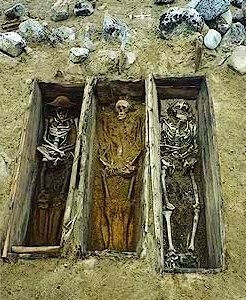Arctic odyssey: the whaling rush

AG picture editor Chrissie Goldrick shares her experiences
on the the AG Society expedition
to the Arctic. Read the whole story in the latest issue of AG, out now! Find more blogs in this series here.
ONE MORNING’S ZODIAC excursion had brought us to Amsterdamoya and, more specifically, the former Dutch whaling station of Smeerenburg (Blubbertown) where we visited the remains of a whaling village that once boasted 200 residents.
Whales abounded in these northern oceans 350 years ago – but not anymore. In 1596, Dutch explorer Willem Barents reported an abundance of whales, seals and walrus in the seas around Svalbard, and in the wake of this intelligence came the whalers of many European nations seeking fresh fields for exploitation.
First the English and then the Dutch came in 1610 and 1611 respectively. They harvested whale oil, extracted by boiling down whale blubber in huge copper vats, for use as lamp oil, lubricants and in soap-making. Whalebones and baleen were used in corset making. The brick foundations of the blubber boilers are all that remain at Smeerenburg which reached its peak of production in the 1630s.
Up until the middle of the 17th century, whales were hunted inside the fjords and close to the coastline, from open rowing boats, usually crewed by six men. In the bow of the boat sat the harpooner, to the stern sat the mate with four oarsmen in between. Several boats would be involved in a single kill. The first harpoon would be thrown and the line attached would pay out, pulling the boat behind the injured whale.
Eventually blood-loss and exhaustion would slow the victim down, all nearby boats then pitching in to spear and lance the whale to death before the dying creature could be towed back to the whaling station to be flensed on the beach.
The most sought-after quarry was the right or bowhead whale, (Balaena mysticetus) so called because so much about it was right: a slow swimmer, it was easier to chase, stayed afloat when dead and produced a high yield of the valuable blubber.

Tourists to the old whaling hut pale in insignficance to the majestic surrounds. (Photo: Chrissie Goldrick)
The high fire risk presented by wooden ships of that era meant that blubber-processing needed to take place on land and whaling stations were established close to inshore hunting grounds. There were many such stations established in Svalbard in the first half of the 17th century but by mid-century, the whales had all but disappeared from the fjords and inshore zones and whalers had to take to the open seas.
This brought about technological change that would enable processing to take place out to sea. Ships were modified to facilitate flensing and boiling, or at least storage of blubber for processing at the home port. The subsequent expansion in pelagic whaling saw species numbers plummet over a short period of time. In 1612, English captain Jonas Poole described the scene in the waters around Svalbard, “the whales lay so thicke [sic] about the ship that some ran against our cables, some against the ship and one against the rudder.” By the end of the 18th century, the whales were all but gone and the major shore-based whaling operations with them.
Bowhead whales are now considered virtually extinct in the region, despite a number of recent sightings off Svalbard. Whaling continued on smaller scales up until the invention of the explosive harpoon gun in the 1890s. Pomors, Russian hunters from the shores of the White Sea, established small hunting communities during the 18th and 19th centuries and remains of these settlements are found throughout the archipelago.
The advent of the powered harpoon enabled for larger, faster species of whale to be taken and from 1905 big whales like the fins and blues were hunted by Norwegian whalers with processing again taking place on land. Within two years, however, after the taking of 2000 large species of whale, the seas were once again empty around Spitsbergen and the whalers moved on.
One of the most arresting sights to greet us on our cruise was the old Norwegian whaling station of Bamsebu, at the head of Van Keulen fjord. Belugas or white whales (Delphinapterus leucas) have been hunted throughout Svalbard’s history by Pomors and subsequently Norwegians, using nets from row boats, and Bamsebu is the site of a 1930s Norwegian operation. Old wooden whaling boats lay hauled out on the beach, perfectly preserved by the Arctic climate.
Across the bay is the well-kept hut and five huge piles of bleached bones, a reminder of the more than 500 belugas that were taken here for their skin and fine oil up until the 1960s. Today belugas are protected around Svalbard but are still hunted in Greenland and parts of Russia.

Uplifted whalers’ graves. (Photo: Svalbard Museum)
The bodies of whalers have been exposed at the surface due to the uplift of the area – a consequence of the dynamic geology of the area. Loved ones often covered the graves with rocks to prevent such exposure.
MORE INFO
Read other blogs in this
series
AG Society Arctic expedition
2011
Aurora
Expeditions




